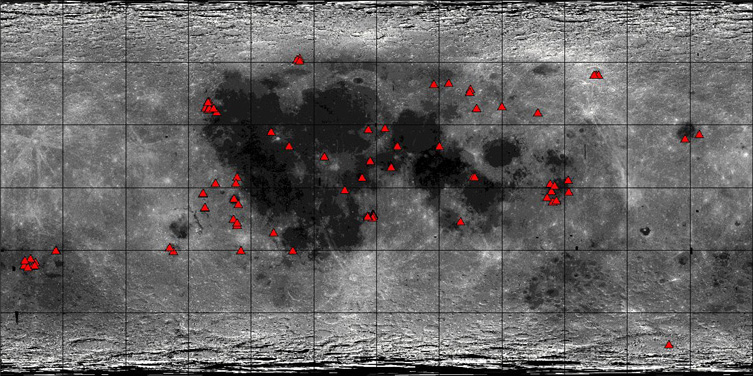February 10, 2015
Lunar Pyroclastics
Originally published February 10, 2004
Image Credit: Lisa Gaddis |
|
Lunar Pyroclastic Deposits Lunar volcanism is best represented by the massive lava flow piles - or maria - filling impact basins. But the Moon also had other styles of volcanic activity including explosive or pyroclastic eruptions. Pyroclastic is the two dollar (2 Euro?) word for fragmental rocks thrown out of erupting volcanoes. It includes particles from boulder size to microscopic - with the smallest material known as ash. Lunar pyroclastic materials were first recognized as glass beads in lunar samples. Ejected molten clots of magma quickly cooled into spheres, unaffected by a streamlining atmosphere. Some of the most famous pyroclastic deposits are the dark halo patches inside Alphonsus and the Apollo 17 Taurus-Littrow region in southeast Mare Serenitatis. Pyroclastic material can be identified by a variety of remote sensing techniques. In a radar image, pyroclastics are smoother than most other lunar materials. And visually, pyroclastic materials tend to be the darkest albedo material on the Moon. Lisa Gaddis and a team of researches have compiled this map of more than 100 lunar pyroclastic deposits. Clearly most deposits are near the maria and others occur in floor-fractured craters which probably are the surface manifestations of magma that rose up under some craters. Pyroclastic eruptions were probably gas-rich fire-fountains as observed in Hawaii. Technical Details: Related Links: Yesterday's LPOD: Seeing Double: Pythagoras Tomorrow's LPOD: I drew a map so I get to add names |
|
Author & Editor: |
COMMENTS?
Register, Log in, and join in the comments.




